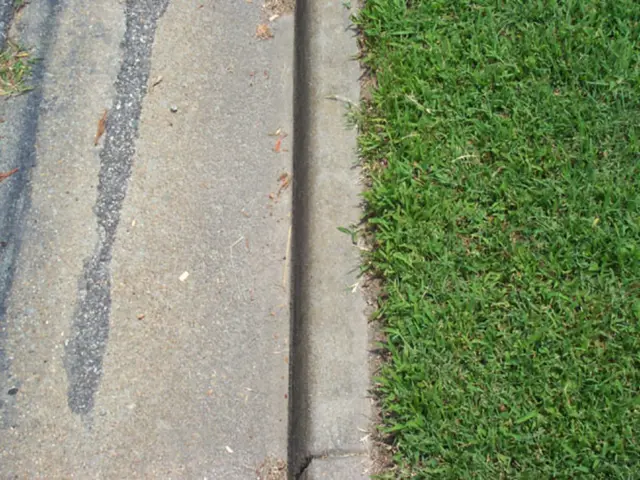Exploring Various Therapeutic Strategies for C3 Glomerulopathy (C3G)
Let's dive into the nitty-gritty of C3 glomerulopathy (C3G), a rare kidney condition that affects about 2-3 people per million. This sneaky bugger causes protein deposits to build up in the kidney's filtering tissues, leading to a decline in kidney function and, potentially, kidney failure.
Current treatments focus on supporting healthy kidney function and suppressing the immune system. Traditional strategies involve systemic treatments to quell the immune system, while innovative therapies zero in on proteins responsible for C3G's activity.
The root cause of C3G lies in certain genes. These genes manage the body's complement system—part of the immune system—ensuring a balance so it works properly. However, when these genes get all jumbled up, it causes C3G. In this condition, specific complement proteins become too active, leading to an excess of C3 protein. Parts of the C3 protein, in turn, turn into deposits in the kidney, damaging the glomeruli and impairing the kidneys' ability to filter toxins.
Several factors contribute to the onset of C3G, including genetic changes and the presence of antibodies that mess with the complement system's regular function. While genetic links among family members have been observed, it's considered non-inheritable.
Treatments for C3G can't reverse or cure the condition, but they can slow down kidney damage. The Kidney Disease: Improving Global Outcomes (KDIGO) organization recommends supportive interventions like ACE inhibitors and ARBs, which lower blood pressure and prevent protein leakage, to help slow and prevent kidney damage.
Immunosuppressive therapies like mycophenolate mofetil (MMF) and glucocorticoids are also suggested if kidney function has declined significantly or shown other markers of disease progression.
Complement inhibitors, which halt complement system activity, are another treatment option. Eculizumab and ravulizumab are monoclonal antibodies that block the terminal pathway of the complement system, aiming to reduce kidney damage. However, results have been mixed.
Reducing the burden on the kidneys through diet can be beneficial. This might involve reducing salt, potassium, and phosphorus, balancing protein and healthy fat levels, and managing fluids. Working with a dietitian for a tailor-made diet plan could be helpful.
New treatments in the pipeline target various parts of the complement system, aiming to interrupt the series of events that lead to the activation or breakdown of C3, with the goal of preventing damage to the kidneys. Some promising pharmaceuticals in the pipeline include pegcetacoplan, ARO-C3, iptacopan, danicopan, avacopan, KP104, and narsoplimab.
In summary, C3 glomerulopathy is a rare condition that impairs kidney function through protein deposits. Current treatments focus on supporting kidney health and suppressing the immune system, with emerging therapies targeting specific complement proteins to directly modulate disease mechanisms. The future of C3G treatment seems to be heading towards personalized and protein-specific therapies, offering promising outcomes and reduced side effects.
- C3 glomerulopathy (C3G) is an uncategorized medical-condition that affects about 2-3 people per million, causing kidney disease by building up protein deposits in filtering tissues.
- Glomerulopathy is a kidney disease characterized by the presence of C3 protein deposits in the glomeruli, leading to chronic diseases such as impaired filtering and potential kidney failure.
- The immune system's role in C3G is significant, as treatments focus on immunosuppressive therapies like mycophenolate mofetil (MMF) and glucocorticoids to suppress immune activity.
- Science has unveiled that certain genes manage the body's complement system, and mutations in these genes cause C3G, leading to an excess of C3 protein and protein deposits in the kidney.
- Diet plays a crucial role in supporting kidney health for those with C3G, with recommendations to reduce salt, potassium, and phosphorus intake while balancing protein and healthy fat levels.
- Filtered by the kidneys, toxins play a role in various health-and-wellness aspects, including respiratory-conditions, digestive-health, eye-health, hearing, cardiovascular-health, and neurological-disorders.
- The kidneys' impaired function in C3G can lead to chronic diseases, including but not limited to skin-conditions and autoimmune-disorders.
- New therapies for C3G are in the pipeline, focusing on targeting specific complement proteins for a more personalized approach to treatments and reducing side effects.
- Pharmaceutical companies are developing promising new treatments such as pegcetacoplan, ARO-C3, iptacopan, danicopan, avacopan, KP104, and narsoplimab, which aim to interrupt the series of events leading to activation or breakdown of C3.
- The future of C3G treatment appears headed towards personalized and protein-specific therapies, offering hope for those suffering from this rare but impactful disease.








